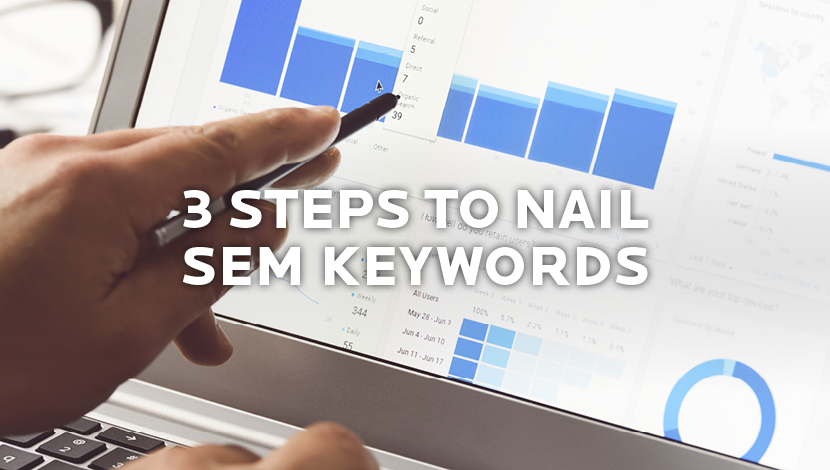
If you aren’t familiar with SEM campaigns, the acronym stands for Search Engine Marketing. This is the process of promoting your business by buying ads on search engines, and although it may seem complex at first, following a few critical tips will lead to a successful campaign.
Finding the right keywords can be the hardest part of an SEM campaign. I follow three key steps to ease through the process:
- Always think like a customer, throughout the whole process.
- Do as much research as possible.
- Track your analytics.
Think like a customer
When you think like a customer, you uncover more relevant terms/phrases searchers use to describe a product or service and find you. I stress organization as it helps to break down the campaign(s) into more manageable pieces, especially if you’re doing campaigns for an entire website. I typically begin with categorizing the client’s business or what they want to be advertised into buckets with similar products/services. By doing this I can research more efficiently, have a better idea of ad group structure, what landing page to use and create better ad text. Just remember, these buckets are never concrete, I sometimes combine two buckets or break one out into two or three.
Once I am organized and thinking like a customer, I start my research. I use Google’s Keyword Planner often as it has super useful features. For example, I like to add the locations I’m targeting to the tool. I do this to see only the data for that area, giving me a more accurate measure on searchability and popularity. It also provides more realistic data on the bid price for each word/phrase. But don’t stop your research there.
Do your research
Another tool I use a lot is Google’s search page autofill. I start with a general term to see what Google fills the search bar with, write those I like down, and then try another variation. I like doing this because it can confirm the use of words I already have and provide more ideas. There are a lot of other research tools around the internet that are super helpful, picking those just depends on what you are looking for.
I also look at the clients’ website or landing page for help. This offers more direct product/service information like specs, models, and language that the industry/company uses, for example. Keep in mind: would a customer search the exact model number for shoes? Probably not. For a tractor or other heavy machinery? Some searchers will. So, depending on what you’re advertising, it can be worth bidding on the keyword to see what traffic it generates. You can always pause or remove the word later.
Along those lines, when it comes to the actual words, I try to incorporate both generic (e.g. women’s winter shoes) and specific, long-tail words (e.g. women’s tan knee-high winter boots). The generic words reach a wider audience but can be more competitive, require higher bid amounts, and may allow for the ad to appear in unrelated searches. Specific keywords target specific customers, are typically less competitive and may be more likely to lead to a conversion. I also try to use a good variety of match types. This helps with reach while creating a robust and measurable campaign. Don’t forget to add negative keywords to avoid showing ads in unrelated searches, especially if you’re using a lot of generic words.
Track your analytics
After campaign launch, pay attention to your keywords; how are they performing? Do you need to raise a bid? Maybe pause words with a low search volume? Lastly, using the Search Terms Report in Google Ads is super helpful as it shows what people searched to make your ad appear, giving you more keyword ideas as the campaign runs.
Interested in utilizing Google Ads for your business? We’d love to help!
